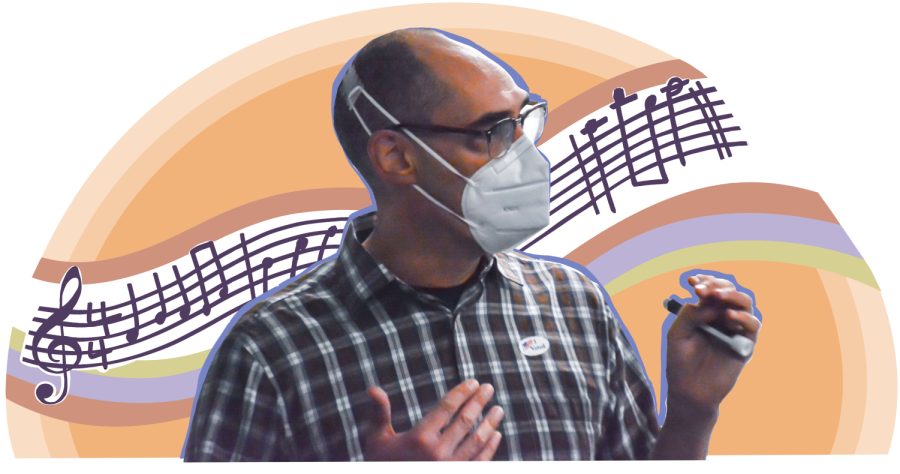The analysis of intervals: Music theory with Ben Case
CASE COUNTS: California Teacher of the Year Ben Case describes the different types of cadences to his class.
December 9, 2022
Behind any beautiful work of literature or art, there lies a layer of complexity with a deeper meaning. Music is no exception. Understanding and learning the intricacies of music allows musicians to better understand their instruments and experience music more profoundly.
Taught by Northwood Instrumental Music Director Ben Case, who was recently named a California Teacher of the Year, AP Music Theory studies all the different components of music, from how compositions are crafted to how composers utilize various styles, notations, tempos, articulations and instrumentations to create unique works of music.
“Music theory is essentially musical engineering, where you are learning how every aspect of an ensemble works together and how it all works to create a cohesive melody,” Case said. “You learn why compositional devices are used by composers to elicit certain elements of their story, making the performance more authentic to the intent of the composer.”
Music theory is how you analyze music from a perspective other than how it sounds. So rather than listening to music like you usually do, you look at music, write music and contemplate it.
Learning music theory is similar to learning the intricacies of a foreign language. In the ensembles, you learn how to play (“how to speak”) and in Music Theory, you learn how to read it and how to write it.
“Prior to this class, my knowledge of music and music theory was mainly based on my percussion experience and I could identify which notes were which on a sheet of music,” sophomore Aarya Raghavasugosh said. “Through Music Theory, I’ve been able to make connections between my ensemble class and Music Theory which has really made me grow more as a musician as a whole. Mr.
Case makes his theory lessons engaging and tries to connect them with real-life examples in order to to make the lessons more relatable and easy to understand.”
The notion of knowing the “why” in music theory has prevailed among all of the students over the past 15 years that Case has taught the course.
Ultimately, the goal in Music Theory is for all students to create and perform their own compositions, and to be able to understand how each line of music interacts with others in order to tell a story. And Case hopes to use this story to help guide students to discovering their love for music.



![AAAAAND ANOTHER THING: [CENSORED] [REDACTED] [BABY SCREAMING] [SIRENS] [SILENCE].](https://thehowleronline.org/wp-content/uploads/2025/06/lucy-1200x800.jpg)


















































![AAAAAND ANOTHER THING: [CENSORED] [REDACTED] [BABY SCREAMING] [SIRENS] [SILENCE].](https://thehowleronline.org/wp-content/uploads/2025/06/lucy-300x200.jpg)



